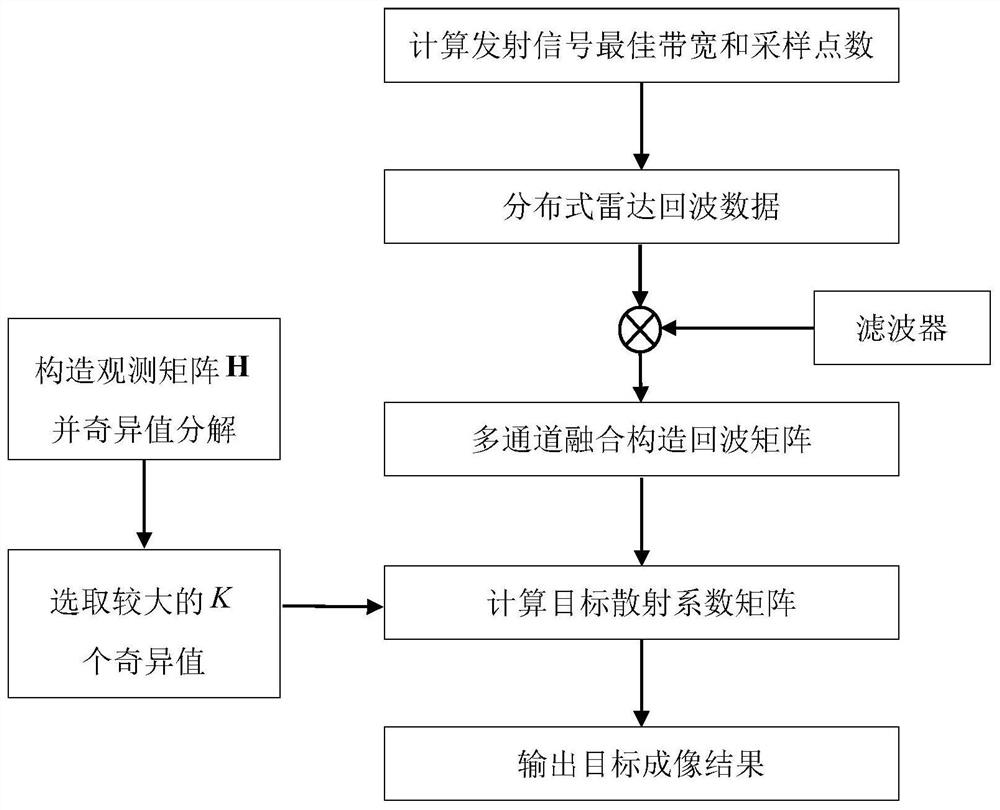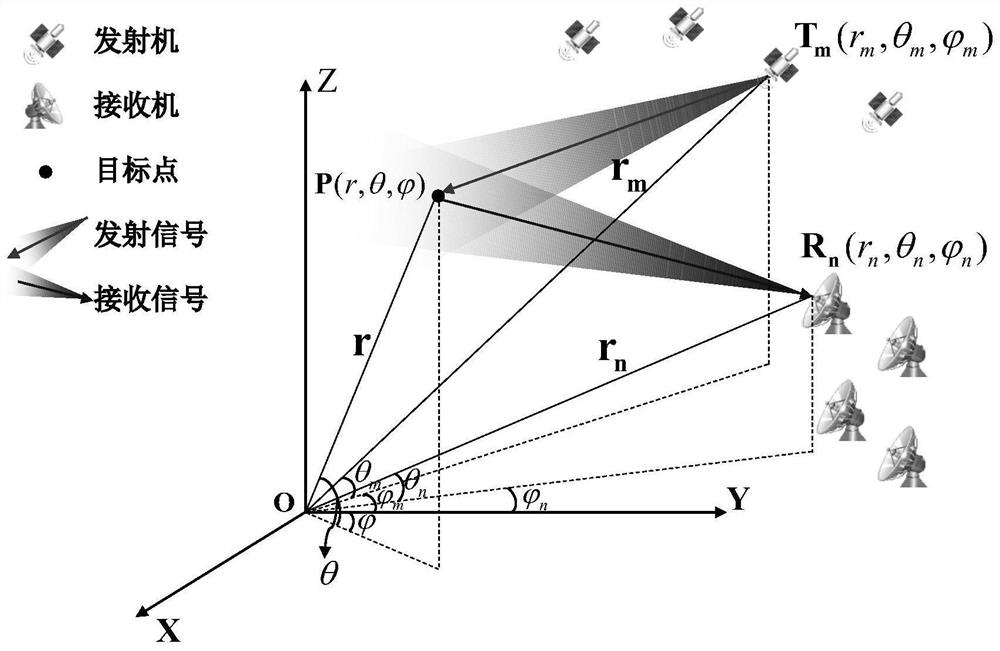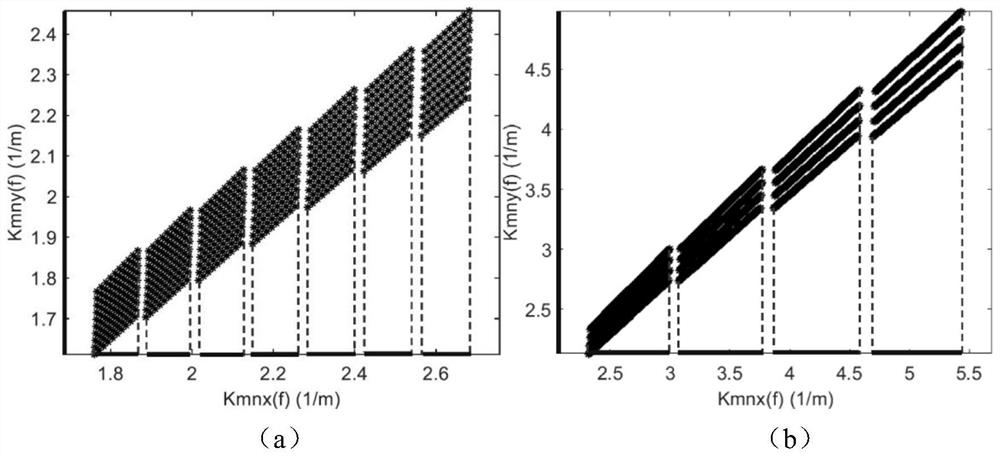A Distributed Radar Imaging Method Based on Resource Optimal Allocation
A technology for radar imaging and resource optimization, applied in the direction of measuring devices, radio wave reflection/re-radiation, instruments, etc., can solve the problems of off-grid targets, rapid imaging performance degradation, and inability to obtain effective information, etc., to achieve high-resolution imaging , Increase the effect of transmitting signal bandwidth
- Summary
- Abstract
- Description
- Claims
- Application Information
AI Technical Summary
Problems solved by technology
Method used
Image
Examples
Embodiment Construction
[0046] In the present invention, each step has been simulated on the MATLAB R2018a platform.
[0047] like figure 1 Shown is the flow chart of the method of the present invention, a distributed radar imaging method for resource optimization configuration of the present invention, by calculating the optimal transmission signal bandwidth and the optimal number of sampling points, and constructing the echo matrix according to the optimal bandwidth and the number of sampling points and the observation matrix, so as to calculate the target scattering coefficient matrix, and realize the inversion of the target in the scene according to the target scattering coefficient matrix.
[0048] Specifically include the following steps:
[0049]S1. Determine the distributed radar imaging geometric model and the spatial spectrum signal model;
[0050] S2. Determine the optimal transmit signal bandwidth and the number of system sampling points based on the spatial spectrum signal model;
[0...
PUM
 Login to View More
Login to View More Abstract
Description
Claims
Application Information
 Login to View More
Login to View More - R&D
- Intellectual Property
- Life Sciences
- Materials
- Tech Scout
- Unparalleled Data Quality
- Higher Quality Content
- 60% Fewer Hallucinations
Browse by: Latest US Patents, China's latest patents, Technical Efficacy Thesaurus, Application Domain, Technology Topic, Popular Technical Reports.
© 2025 PatSnap. All rights reserved.Legal|Privacy policy|Modern Slavery Act Transparency Statement|Sitemap|About US| Contact US: help@patsnap.com



